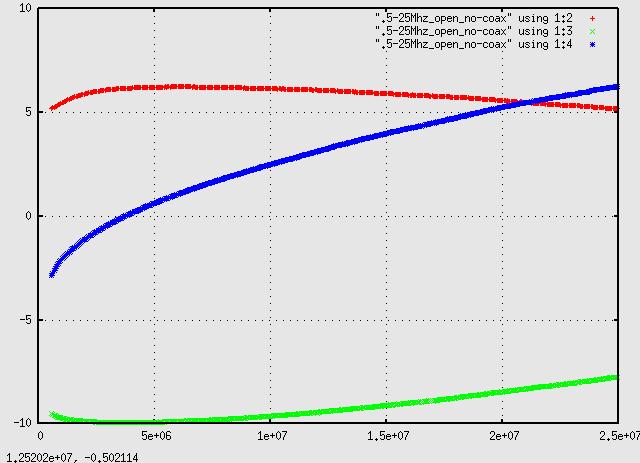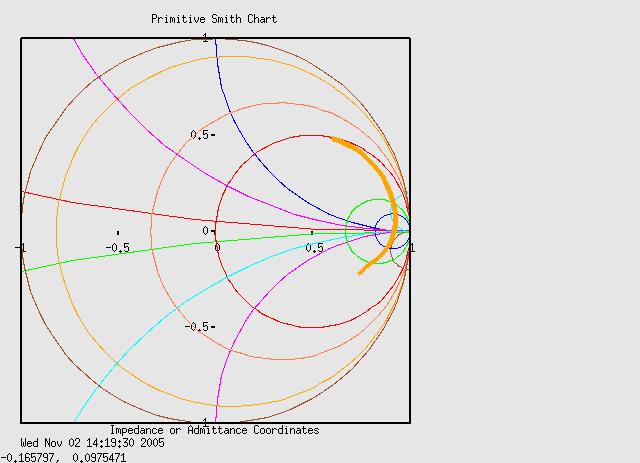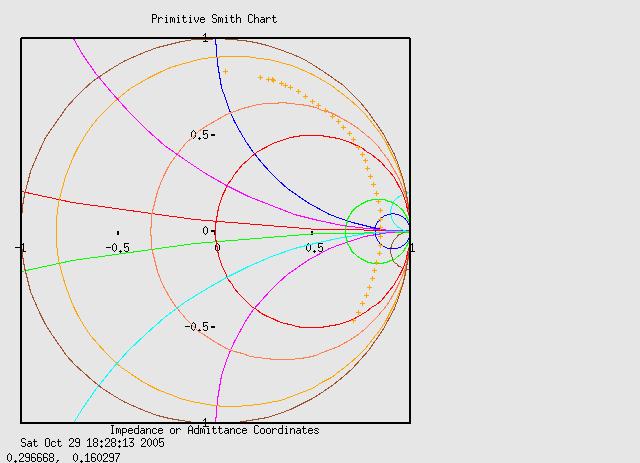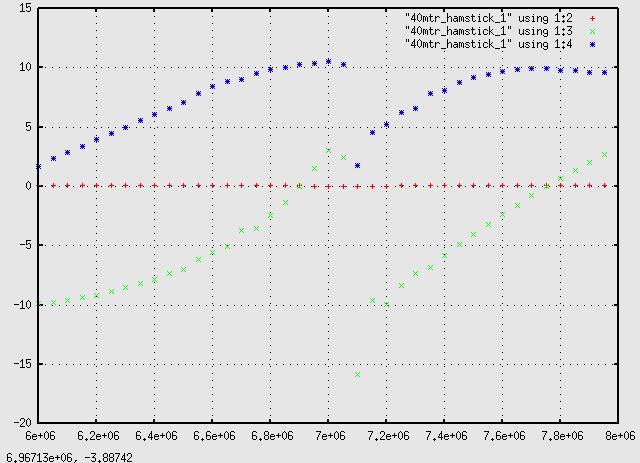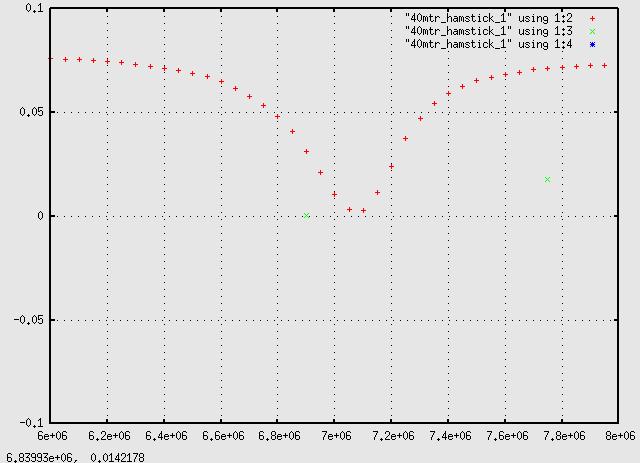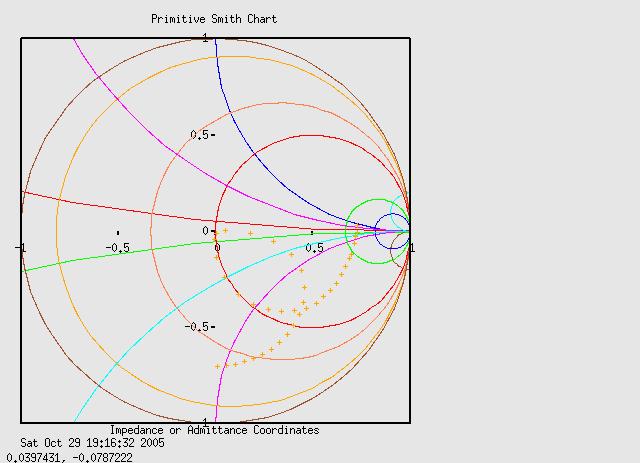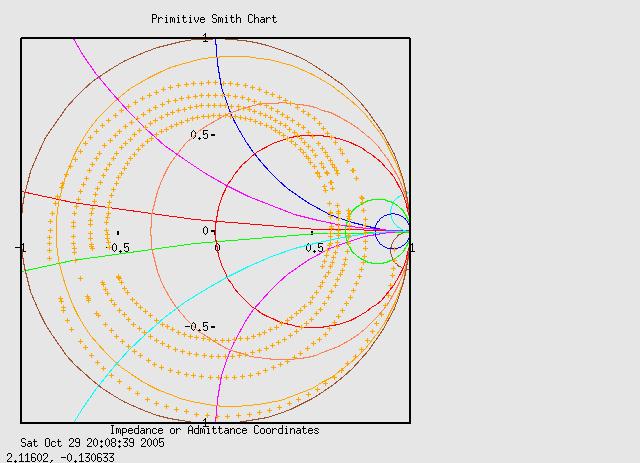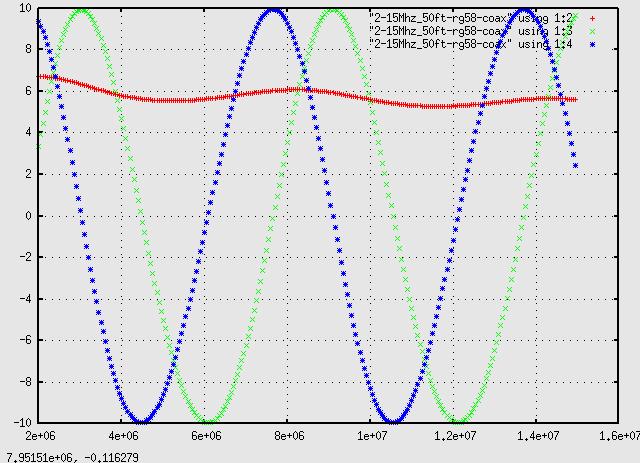
where it looks like an in-phase voltage node appears just above 15Mhz. Going from the other peaks it's 15.15Mhz. And here is the same data run thru a Smith chart converter:
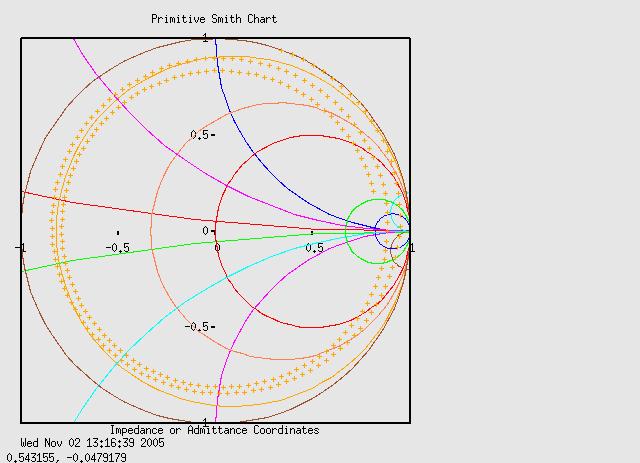
This is a better plot than the earlier once as it does away with the errors due to cos(acos(x)) - the 'gaps' in the circles. I was pleased to see we can use the +90 deg phase shifted reference signal, used to resolve the sign of the angle, to go directly to a polar plot! The following script can be used to convert reports generated with f_sweep_2.py to Smith charts.
To use it, reference the output in smith_chart like:
cu(t,.5),cv(t,.5),cu(t,.5),-cv(t,.5),\ tu(t,0),tv(t,0), "YOUR_DATA_HERE" using 2:3 pause -1where YOUR_DATA_HERE is the converted output filename, then just run
$ gnuplot smith_chart
Unfortunately this is all still uncalibrated. Shortly I hope to have some tables of frequency dependant error corrections for test jig open/short/load ready to go and do some real measurements.
In the meantime, these are just two charts of the test jig with no cables connected, the ZFDC-10-21 'in' port unconnected, .5 to 25Mhz:
